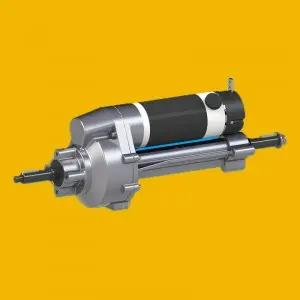The transaxle is a critical component of a vehicle’s drivetrain, responsible for transmitting power from the engine to the wheels. It combines the functions of transmission, axle and differential into one integrated unit. Therefore, it plays a vital role in the overall performance and functionality of the vehicle. Knowing how to tell if your transaxle is in good condition is critical to maintaining the health and longevity of your vehicle.
There are several key indicators that can help you determine the condition of your transaxle. By paying attention to these signs and symptoms, you can detect potential problems early and take the necessary steps to resolve them before they escalate into something more serious.
Abnormal noise
One of the most common signs of a transaxle problem is unusual noises in the transmission or axle area. These noises may appear as whining, grinding, or clunking sounds, especially when changing gears or accelerating or decelerating. If you notice any of these noises, it could indicate a problem with a transaxle component, such as a worn gear, bearing, or constant velocity joint. Ignoring these noises can lead to further damage and potential failure of the transaxle.
Liquid leakage
Another telltale sign of a transaxle problem is a fluid leak underneath the vehicle. The transaxle uses transmission fluid to lubricate its internal components and promote smooth operation. If you notice puddles or stains of red or brown liquid on the ground where your car is parked, it could indicate a leak in the transaxle system. Low fluid levels can cause increased friction and heat, causing premature wear and potential damage to the transaxle.
Transfer issues
A healthy transaxle should facilitate smooth, seamless shifts, whether it’s an automatic or manual transmission. If you’re experiencing difficulty shifting, such as slipping, hesitation, or difficulty transitioning, this could be a sign of a transaxle problem. This could be caused by problems with the clutch, gear synchronizer, or internal transmission components. Prompt resolution of these shifting issues can prevent further transaxle damage and ensure optimal drivability.
Vibration or trembling
A vibration or shuddering sensation while driving, especially when accelerating, may indicate a problem with the transaxle. These symptoms may be caused by worn or damaged CV joints, which are responsible for transferring power from the transaxle to the wheels. Ignoring these vibrations can cause further damage to the transaxle and affect the vehicle’s drivability and safety.
Slow response or slow acceleration
A healthy transaxle should provide responsive and consistent acceleration when you press the gas pedal. If you notice a lack of power when accelerating, sluggish acceleration, or delayed response, it could be a sign of a transaxle problem. This can be caused by internal transmission issues, such as a worn clutch, belt, or torque converter, affecting the transaxle’s ability to efficiently transfer power to the wheels.
Burnt smell
A burning smell coming from the engine or transmission area may be a warning sign of a transaxle problem. This smell may indicate overheating of the transmission fluid due to excessive friction or insufficient lubrication within the transaxle. Ignoring this symptom can result in severe damage to the transaxle and the need for expensive repair or replacement.
Dashboard warning light
Modern vehicles are equipped with onboard diagnostic systems that monitor various components, including the transaxle. If there is a problem with the transaxle, it may trigger a warning light on the dashboard, such as the transmission or check engine light. These lights can serve as early indicators of potential transaxle problems, prompting you to seek professional diagnosis and repair.
In summary, the transaxle is an important part of the vehicle’s drivetrain, and its proper operation is critical for optimal performance and safety. By paying attention to the signs and symptoms above, you can effectively assess the condition of your transaxle and take proactive steps to resolve any potential issues. Regular maintenance, including fluid checks and changes, can help extend the life of your transaxle and avoid costly repairs. If you notice any of these signs, be sure to consult a qualified mechanic or technician to diagnose and resolve the transaxle problem immediately. Taking proactive steps to keep your transaxle healthy will ensure a smooth, reliable driving experience for years to come.
Post time: May-29-2024


